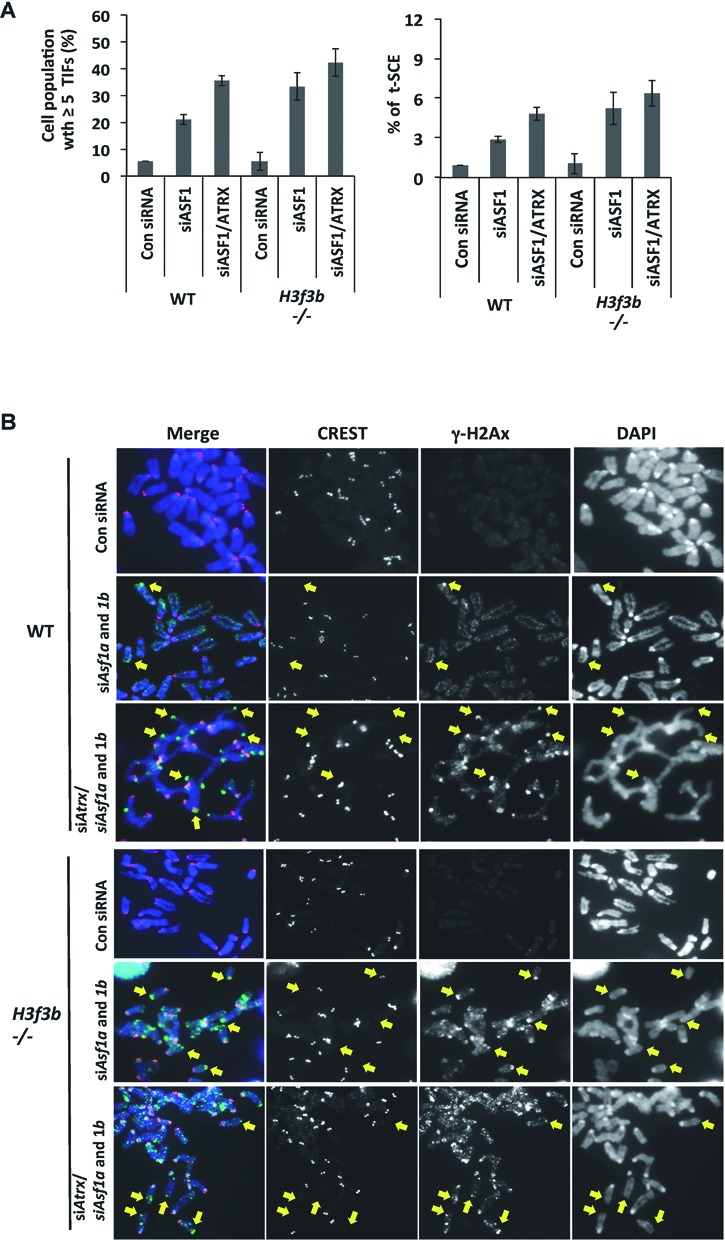Figure 4.

H3.3 deficient ESCs are sensitive to the induction of nucleosome disruption. Immunofluorescence analysis was performed to detect the presence of TIF (indicated by positive γ-H2Ax staining at telomeres) following 96 h siRNA-depletion of either Asf1a/b alone or a combined Atrx and Asf1a/b in both WT and H3f3b−/− ESCs. (A) WT ESCs subjected to a combined Atrx and Asf1a/b siRNA depletion (for 96 h) show a much greater increase in cell population with ≥5 TIF per cell, compared to ESCs subjected to a single Asf1a/b siRNA depletion (for 96 h). In the H3f3b−/− background, cells subjected to a single Asf1a/b siRNA depletion show a comparable increase in the level of cell population with ≥5 TIF per cell when compared to cells subjected to a combined Atrx and Asf1a/b siRNA depletion. These levels of increase in TIF in H3f3b−/− cells are also similar to those detected in WT ESCs subjected to a combined Atrx and Asf1a/b siRNA depletion. Examples of TIF on metaphase chromosomes are shown in (B). In parallel, CO-FISH was performed to assess t-SCE activity (A). In WT background, a combined siRNA depletion of Atrx and Asf1a/b results in a further increase in t-SCE compared to a single Asf1a/b siRNA depletion alone. In the H3f3b−/− background, cells subjected to a single Asf1a/b siRNA depletion show a comparable increase in t-SCE when compared to cells subjected to a combined Atrx and Asf1a/b siRNA depletion. The levels of increase in t-SCE in H3f3b−/− cells subjected to a single Asf1a/b siRNA depletion are also similar to that detected in WT ESCs subjected to a combined Atrx and Asf1a/b siRNA depletion.
